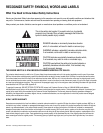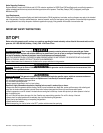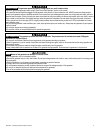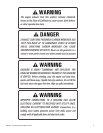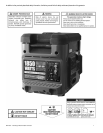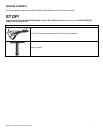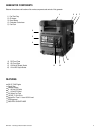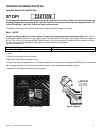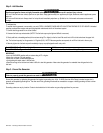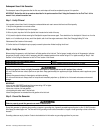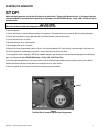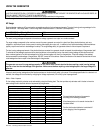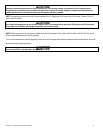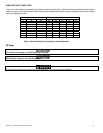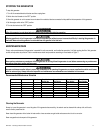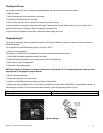
GEN1850 1850 Surge Watts Portable Generator 11
Step 2 - Add Gasoline
Gasoline and gasoline fumes are highly flammable and explosive. Handling fuel can result in serious injury or burns.
• Do not fill the fuel tank near a heat, sparks or an open flame. Keep gasoline away from appliance pilot lights, barbecues, electric appliances, power
tools, etc.
• Do not overfill the fuel tank. Always check for fuel spills and immediately wipe them up. Spilled fuel is a fire hazard and causes environmental
damage.
To add gasoline:
To ensure that this generator runs smoothly, use only FRESH, UNLEADED GASOLINE WITH AN OCTANE RATING OF 87 OR HIGHER. Unleaded
gasoline produces fewer engine and spark plug deposits and extends the life of the exhaust system.
1. Confirm that this generator is on a level surface.
2. Unscrew fuel tank cap and set aside. (NOTE: The fuel tank cap may be tight and difficult to unscrew.)
3. Slowly add fresh, unleaded gasoline (with an octane rating 87 or higher) to the fuel tank. Be careful not to fill the fuel tank above the upper limit
line. The fuel tank capacity for this generator is 2.3 gallon (8.9 L). NOTE: Because gasoline can expand, do not fill the fuel tank to the very top.
4. Securely tighten the fuel tank cap and immediately wipe up any spilled gasoline with a dry cloth.
Model GEN1850 Fuel Tank Capacity (gals /L) 2.3/8.9
Model GEN1850 Fuel Type Fresh, Unleaded Gasoline Octane Rating 87 or Higher
IMPORTANT:
• Use only UNLEADED gasoline with an octane rating of 87 or higher.
• Never use a mixture of oil and gasoline.
• Never use old and/or contaminated gasoline.
• Avoid getting dirt and/or water in the fuel tank.
• Gasoline can age in the fuel tank and make it difficult to start this generator. Never store this generator for extended time with gasoline in the
fuel tank.
Step 3 - Ground the Generator
Failure to properly ground this generator can result in electrocution.
Ground this generator by tightening the generator feet against a grounding wire. A No. 12 AWG (American Wire Gauge) stranded copper wire is
generally an acceptable grounding wire. The other end of this grounding wire should be connected to a copper or brass grounding rod that is driven
into the earth.
Grounding codes can vary by location. Contact a local electrician for information on grounding regulations for your area.



